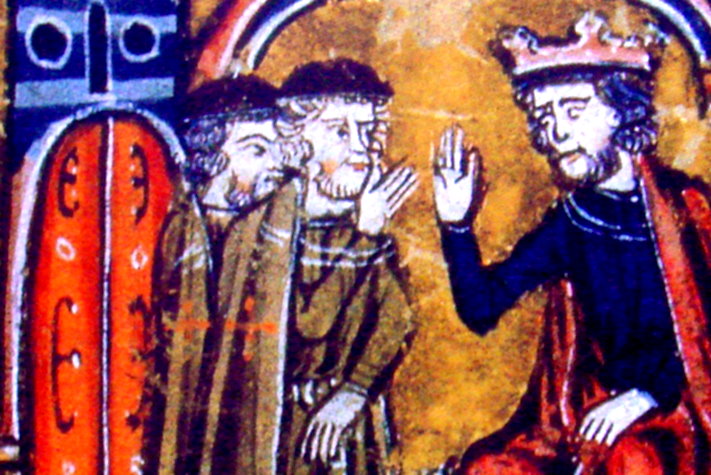Before this period that covers from 1104 through 1120...what occurs during this period? This prehistory is the dark era of these knights. How did they support themselves?
As we shall see they had more than ample support, powerful support such as no other group of this sort ever counted on, not even the Deacon of St. John Hospitalier, to take off with such self assured success. They had economic power, they had hosts, they had lawfull cover. Later would come donations that miraculously multiply upon being accepted at Troyes. Their logistics and marketing worked marvelously.
Their provenance was made up of members of royalty and from the different noble houses of the Franks: Burgundians, Normans. etc. made the rest an easy passage of alliance with the highest spheres of the church, perhaps as Mellado says about its early ambition having no measure, perhaps it was not all bucolic and romantic as it has passed on in the annals of its first history.
It is a natural understanding that prior to this time there was already a formation “in testing” since previous years. How many? Not known, but logic prevails and we must yield and honor the closest hypothesis based on archival documents that were consulted. If my conjectures are correct (and there is no authentic proof to think that they are not possible) we could be talking not of the nine years of its existence until Nablus. If we count 1104 as the year of its conception until 1114 when it is already constituted and is put into practice upon the arrival of the Hugh’s, in that year, until 1120, when its officially recognized at Nablus, some 16 years had transpired that would encompass the novitiate, the temporal acknowledgment; the creation of the Brotherhood or congregation in the aforementioned Synod. It can be stratified in six different periods.
- Ideological and embryonic phase from 1104 until 1107, in which the creation of a police force is perceived as necessary. Creative steps are taken that leave Godfrey of Sainte-Omer tasked with its creation.
- Formation of the Militia Christi phase, incorpora-ting same with knights related to the conquerors that take Palestine as the new promised land, there whe-re the mister nobody’s can become someone, forcing that social stratification (35). In the long run, the church had served on not few occasions as a means of social climbing.
- Phase of activation with the presence of the Hugh’s from 1114 to 1120, where their relationship would be without rules,habits, monastic vows, no depen-dency on military or ecclesiastical authorities, bound only by the particular and personal oath of each of its members. Here we may apply from William of Tyre who wrote “the knights wore secular garb, they wore clothing such as all folk wear...”
- Foundation phase, Synod of Nablus (1120, TN) of the congregation or brotherhood, with a proper name, rules, dwellings, monastic vows, uniformity, disciplines, etc.,
- Acceptance by the church at Troyes phase (1129, TN). The Creation of the Order.
- Definite consolidation of the Order in 1139 by the Omne Datum Optimum Papal Bull.
(...) Thus the date of creation of the embryonic Templars, would be around 1107/1113, (...) From 1114 until 1120 is the recruiting phase. In 1120 the Brotherhood is legalized and in 1129 the Order is created by the Holy See, and is confirmed in 1139."
This blog quotes from an article "The First Templar Knights (Part 2) - The origin of the Temple" by Josè Maria Fernandez Nùñe in the December 2015 OSMTJ Spain The Graal Magazine to be downloaded here. The text and interpunction was slightly improved and clarified. For references see the original text. Illustration King Baldwin meeting Hughees de Payns source
Support TemplarsNow™ by becoming a Patron, tipping us or buying one of our Reliable Books

No comments:
Post a Comment